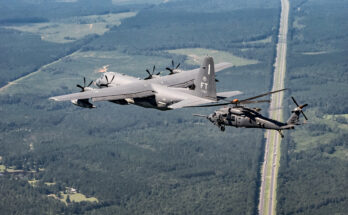by Bill Ostrove, Space Systems Analyst, Forecast International.
Between 2012 and 2016, global militaries took delivery of 203 satellites. Deliveries reached a peak in 2013 with the launch of 55 satellites. Launches declined to a low point in 2016, when only 26 satellites were delivered into orbit. Going forward, Forecast International expects yearly satellite deliveries to continue between those two endpoints.
During the past five years, satellite size – measured by launch mass – has fluctuated. In 2012, the average launch mass of military satellites reached 3,533.5 kilograms – a high during the last five years. However, since then, average launch mass has declined to 2,236.2 kilograms in 2013, 1,588 kilograms in 2014, 1,196.5 kilograms in 2015, and 1,496.3 kilograms in 2016. Forecast International has launch mass data for 113 out of the 203 satellites launched between 2012 and 2016 (this data is not available for all military satellites).

Even as militaries increasingly rely on smaller satellite form factors, adoption of SmallSats will be slower in the military sector than in the commercial sector. Companies like Planet and OneWeb plan to launch hundreds of small satellites to serve their customers around the world in the coming years.
Although the average launch mass has declined, extremely large satellites – those with a launch mass above 6,000 kilograms – continue to be important to the market. Satellites such as MUOS-5, Kobal’t-M 10, and Persona-2 continue to play an important role in military operations.
Requirements for high operational capability and protection against enemy attacks will require larger satellites for militaries than for commercial companies, or even civil government agencies. Militaries are also more risk-averse and less willing to use untested equipment than are new commercial ventures.
Still, as evidenced by declining average launch masses, smaller satellites are becoming more popular with military buyers.
Satellites with a launch mass below 3,500 kilograms have grown in favor compared to larger satellites. In 2012, satellites with a launch mass of 3,501 kilograms or above made up 54.6 percent of all satellites launched that year. However, by 2016, that figure declined to 15.8 percent, while satellites with a launch mass of 3,500 kilograms or below increased from 45.5 percent of the market to 84.2 percent.
Satellites between 501 kilograms and 3,500 kilograms of launch mass represent one area of growth, increasing from 18.2 percent of the market in 2012 to 47.4 percent in 2016. That mass range enables satellites to be large enough to accommodate military needs while remaining small enough to lower construction and launch costs.
Going forward, there will likely be a place for both small and large spacecraft. Mission-critical spacecraft that require nuclear hardening will likely continue to be large, while other missions can be fulfilled by smaller satellites.
Please feel free to use this content with Forecast International and analyst attributions, along with a link to the article. Contact Ray Peterson at +1 (203) 426-0800 or via email at ray.peterson@forecast1.com for additional analysis.
 Forecast International offers two Space Systems Forecast products: Launch Vehicles & Manned Platforms, with reports on manned spacecraft, expendable launch vehicles and more, and Satellites & Spacecraft, with coverage ranging from microsatellites to large COMSATs – all complete with technical specifications and forecast details.
Forecast International offers two Space Systems Forecast products: Launch Vehicles & Manned Platforms, with reports on manned spacecraft, expendable launch vehicles and more, and Satellites & Spacecraft, with coverage ranging from microsatellites to large COMSATs – all complete with technical specifications and forecast details.

For 50 years, Forecast International intelligence reports have been the aerospace and defense industry standard for accurate research, analysis, and projections. Our experienced analysts compile, evaluate, and present accurate data for decision makers. FI's market research reports offer concise analysis of individual programs and identify market opportunities. Each report includes a program overview, detailed statistics, recent developments and a competitive analysis, culminating in production forecasts spanning 10 or 15 years. Let our market intelligence reports be a key part of reducing uncertainties and mastering your specific market and its growth potential. Find out more at www.forecastinternational.com



